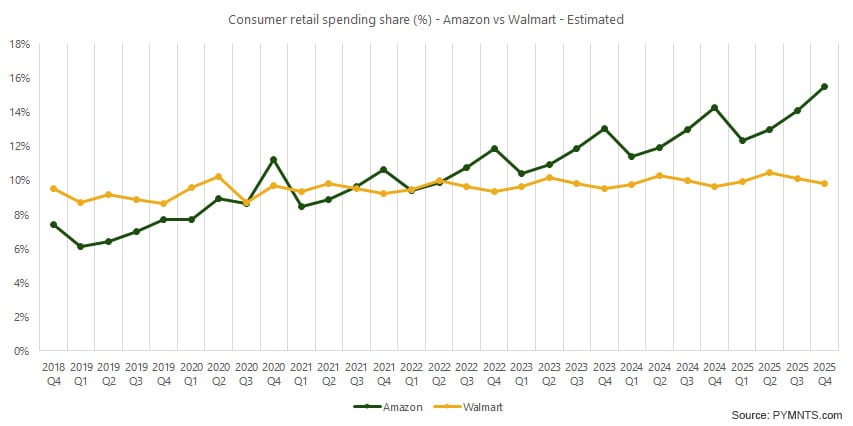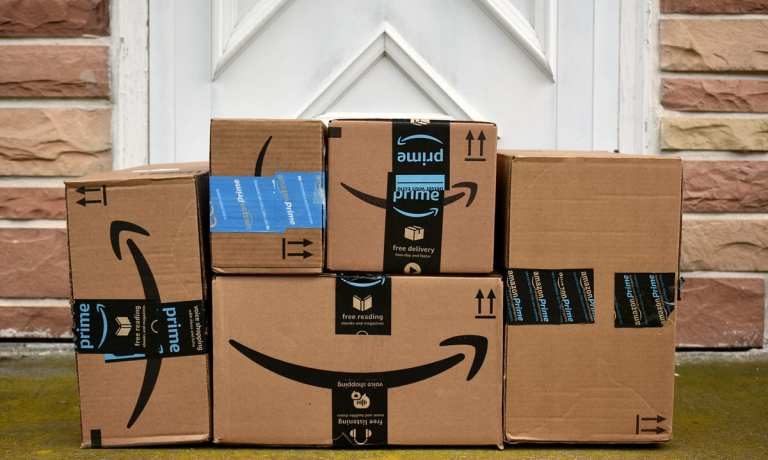Increasing profitability in its core domestic retail business as well as a surge to more than 200 million paid Amazon Prime subscribers saw the world’s largest online retailer report record first-quarter sales and profits Thursday (April 29).
For the three months ended March 31, Amazon said its revenues rose 44 percent to a better than expected $108.5 billion, while more than tripling its net income to $8.1 billion from about $2.5 billion a year ago.
Looking ahead, like many of its peers who have already reported earnings, Amazon also said it expects to see the Q2 revenue growth rate slow to between 24 percent and 30 percent, with operating profit between $4.5 billion and $8 billion, a wide range that implies either a decline of as much as $1.3 billion up to a gain of $2.2 billion versus a year ago.
“I don’t have a downside case yet [on projected eCommerce demand declines], but I’m surprised a bit by the [Q1] growth,” Amazon Chief Financial Officer Brian Olsavsky told investors during the company’s earnings call, noting the company expected to spend about $500 million less on pandemic-related costs in Q2 versus the $2 billion it spent in Q1. “But on Q2 guidance, I would say we are projecting continued strength across all of our segments, and we will remind you that Prime Day is scheduled for later in Q2 [this year], and we’ll have more [as] that quarter unfolds.”
The Burgeoning Bottom Line
Amazon’s huge profit growth came as it booked more than half its total revenue through product sales, which rose 38 percent to $57.5 billion. Its services portfolio, which includes Prime Video and ad sales, rose 52 percent to $51 billion amounting to roughly 47 percent of total revenues. In conjunction with the 10th anniversary of Prime, Amazon said its streaming hours were up more than 70 percent in Q1 as its video service gained popularity, invested in content and programming and won two Academy Awards.
Advertisement: Scroll to Continue
As far as profits are concerned, Amazon Web Services (AWS) contributed $4.2 billion of operating income in Q1, or not quite half the total but down from the more than 75 percent profit burden it bore a year ago.
“During COVID, we’ve seen many enterprises decide that they no longer want to manage their own technology infrastructure,” Olsavksy said on the call. “They see that partnering with AWS and moving to the cloud gives them better costs, better capability and better speed of innovation, and we expect this trend to continue as we move into the post-pandemic recovery.”
At the same time, Amazon’s international division also proved to be a bigger bottom-line contributor and turnaround story this quarter, with non-U.S. revenues rising 60 percent to $31 billion, while delivering $1.2 billion of operating income, compared to the $400 million loss it posted in 2020.
The Revenue Race
Although Q1 has historically been Amazon’s weakest quarter, the cumulative effect of its rising revenue is fueling a much broader long-term battle against rival Walmart by helping it break the tie and take the lead in total U.S. retail sales and domestic market share.

Source: PYMNTS data
According to exclusive PYMNTS research and analysis, the long-simmering leadership cross-over that has been brewing for a decade is projected to see the online giant start to pull ahead at this time next year before expanding that lead over the next five years. If the trend lines hold true, by 2025, PYMNTS expects Amazon’s share of domestic sales will have risen to 14 percent from about 9 percent presently, versus Walmart’s projected 10 percent share four years from now.
While their gross U.S. sales are essentially tied, this retailing war is being fought in seven key battle zone categories, the majority of which are already leaning — or outright pointing — in Amazon’s favor.
With the exception of Health and Personal Care, Auto Parts and Food and Beverage, Amazon is in the lead in four categories and is actively trying to catch and surpass Walmart where it lags — most notably in groceries.
Although news reports have speculated that Amazon is working behind the scenes to assemble and acquire the logistical and real estate assets needed to roll out a major grocery store competitor to cut into Walmart’s 5,000 physical store advantage, the company has quietly been building its portfolio of a dozen Amazon Fresh locations to augment the 500 Whole Foods locations it already owns.
But as far as grocery expansion plans, Olsavsky was tight-lipped.
“Grocery has been great preparation for the post-pandemic period, and I think people really value pickup and delivery, and we see that as numbers go up considerably,” the CFO said. “I think on the Fresh stores — it’s a little too early to comment on the stores themselves — but we’re confident that the [cashierless] Just Walk Out technology will soon be a benefit to customers, and we’re very excited about what’s in the works, but that’s still really early days.”
What’s Next
The Q1 results come at an interesting time for Amazon, as it — like every other online retailer — tries to contemplate how post-pandeimc consumer behavior will change, and how much of the accelerated digital commerce that has emerged over the past 14 months will revert back to traditional offline shopping.
In the meantime, Amazon continues to use its tremendous wealth and clout to dabble in numerous experimental technologies and environmental causes, noting that it is now the largest corporate purchaser of renewable energy globally as well as in Europe.
In addition, there are now just two months left before AWS CEO Andy Jassy takes over the top job as Amazon CEO. However, given that the 25-year Amazon veteran and Jeff Bezos-protege was hand-picked for the role, has been transitioning to it since at least March when it was announced, and will still have his old boss and mentor down the hall as executive chairman, company pundits are not expecting any discernible day-to-day change.
Read More On Earnings:





